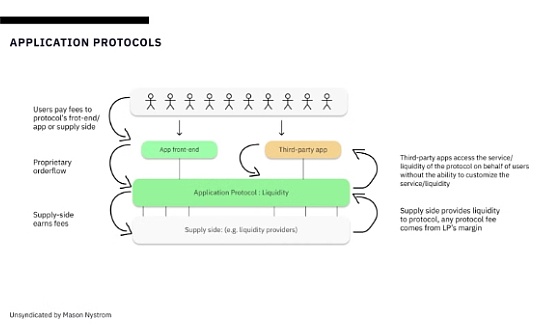The opening ceremony of "Trump Market" is officially over: See how the market prices the "debt crisis" from the rise in term premium

Reprinted from chaincatcher
01/14/2025·25days agoWritten by: @Web3_Mario
Abstract : The cryptocurrency market has experienced relatively large fluctuations this week, and the price trend has also emerged from the M-head pattern. All of this indicates that as Trump’s formal inauguration on January 20 is getting closer, the capital market has quietly begun to price the opportunities and risks after his election, which means that this three-month-long crisis has The opening ceremony of "Trump Quotes" driven by emotions has officially ended. So what we need to do now is to extract the focus of the short-term game of the market from a lot of messy information. This will help us make rational judgments on market changes. Therefore, in this article, the author still writes as a non-financial professional. From the perspective of an enthusiast, I would like to talk about my own observation logic. I hope it can be helpful to everyone. In general, the author believes that the prices of many high-growth risk assets, including the crypto market, will continue to be suppressed in the short term. The reason is that the U.S. Treasury bond market has amplified term premiums and higher mid- and long-term interest rates, which have had a negative impact on them. The reason for this situation is that the market is pricing in the U.S. debt crisis.
**Macroeconomic indicators remain strong and inflation expectations have
not increased significantly, thus having little impact on current price movements.**
So first, let’s take a look at what are the factors causing short-term price weakness. Many important macro indicators were released last week. Let’s take a look at them one by one. First, let’s look at the U.S. economic growth-related data, ISM manufacturing and non-manufacturing purchases. The managers' indexes continue to rise. Since the purchasing managers' index is usually a leading indicator of economic growth, this indicates a better outlook for the U.S. economy in the short term.

Next, let’s look at the situation of the job market. We extract four data for observation, non-farm employment data, job vacancies, unemployment rate and the number of initial unemployment benefits. First, non-farm employment data increased to 256,000 from 212,000 last month, far exceeding expectations. At the same time, the unemployment rate also dropped, from 4.2% to 4.1%. At the same time, JOLTS job vacancies have also increased significantly, reaching 809,000. The more differentiated number of people claiming unemployment benefits has also continued to decrease, which shows that the outlook for the job market performance in January is also relatively optimistic. These all indicate that the current US job market remains strong, and a soft landing should be a certainty.

Finally, let's look at the performance of inflation. Since the December CPI needs to be released next week, we can observe its performance in advance from the University of Michigan's 1-year inflation expectations. Compared with November, this indicator has rebounded to 2.8%, but it is lower than expected, and this value seems to be still within the reasonable range of 2-3% defined by Powell. Of course, the specific development is still worthy of attention. . However, we can see from the changes in the yields of anti-inflation bonds TIPS that the market does not seem to be overly panicked about inflation furniture.

To sum up, the author believes that there are no obvious problems in the U.S. economy from a macro perspective. Then we will identify the core reasons for the current decline in the market value of high-growth companies.
**The medium- and long-term interest rates of U.S. debt continue to rise.
Under the bearish steep pattern, the term premium continues to rise, and the market is pricing in the U.S. debt crisis.**
Let’s take a look at the changes in U.S. Treasury yields. It can be seen from the yield curve that in the past week, the long-term interest rate of U.S. Treasury bonds continued to rise. Taking the 10-year Treasury bond as an example, the bonus climbed by 20BP in one breath. It can be said that the bearish steep pattern of U.S. debt has further intensified. We know that the rise in government bond interest rates has a greater suppressive effect on the prices of high-growth stocks than blue-chip stocks or value stocks. The core reasons are:
1. Impact on high-growth companies (usually technology companies, emerging industries):
Rising financing costs : High-growth companies rely on external financing (equity or debt) to support business expansion. Rising long-term interest rates make debt financing more costly and equity financing more difficult as investors discount future cash flows at a higher rate.
Valuation pressure : The valuation of growth companies is highly dependent on future cash flows (FCF). Rising long-term interest rates mean higher discount rates, leading to a lower present value of future cash flows, thus lowering corporate valuations.
Shifting market preferences : Investors may shift from riskier growth stocks to more robust value stocks with stable dividends, which puts pressure on the stock prices of growth companies.
Restricted capital expenditures : High financing costs may force companies to reduce R&D and expansion expenditures, affecting long-term growth potential.
2. Impact on stable enterprises (consumption, public utilities, medicine, etc.):
The impact is relatively mild : Stable companies usually have strong profitability, stable cash flow, and low reliance on external financing, so rising interest rates have less impact on their operations.
Rising debt repayment pressure : If there is a higher debt ratio, rising financing costs may increase financial expenses, but generally stable companies have stronger debt management capabilities.
Dividends become less attractive : Dividend yields from stable companies may compete with bond yields. When Treasury yields rise, investors may shift to bonds with higher risk-free returns, putting pressure on the stock prices of stable companies.
Inflation transmission effect : If rising interest rates are accompanied by rising inflation, companies may face rising cost pressures, but stable companies usually have strong cost-passing capabilities.
Therefore, it can be seen that the rise in the far-end interest rate of government bonds has a very obvious impact on the market value of technology companies such as cryptocurrency. Then the key to the next question is to locate the core reason for the increase in the far-end interest rate of government bonds in the context of this interest rate cut.

First, we need to derive the calculation model for the nominal interest rate of government bonds as follows:
I = r + π + RP
I represents the nominal interest rate of government bonds, r is the real interest rate, π is the inflation expectation, and RP is the term premium. Here we need to explain. The so-called real interest rate is the interest rate that reflects the real return of the bond and is not affected by market risk preference and risk compensation. , directly reflects the time value of money and economic growth potential, while π refers to the average social inflation expectation, usually observed through the CPI or the yield of anti-inflation bonds TIPS, and finally RP The term premium reflects investors' compensation for interest rate risk. When investors believe that future economic development is uncertain, they require higher risk compensation.
In the first part of the analysis, we have made it clear that the current U.S. economic development remains stable in the short term. At the same time, it can also be observed from the TIPS yield that inflation expectations have not increased significantly. Therefore, real interest rates and inflation expectations are not short-term predictions. As the main factor for the rise in nominal interest rates, the problem is positioned at the factor of "term premium".
To observe the term premium, we choose two indicators. The first is the ACM model estimating the term premium level in US Treasury bonds. It can be seen that in the past period of time, the term premium of the 10-year U.S. Treasury bond has increased significantly. From a numerical point of view, this factor is the main factor that increases the yield of the U.S. Treasury bond. The second is the volatility of Merrill Lynch U.S. bond options, which is the MOVE indicator. It can be seen that in the recent period, the volatility has not changed drastically. Under normal circumstances, MOVE is the implied fluctuation of short-term interest rates. Rate response is more sensitive because it has a larger weight. From this set of data, we can draw a conclusion that the market is currently not sensitive to the risk of short-term interest rate fluctuations. We know that short-term interest rates are mainly affected by the decisions of the Federal Reserve. Therefore, it can be said that the market is currently not aware of the potential policy changes of the Federal Reserve. Clearly pricing risks, so the recent panic caused by the change in the direction of the Federal Reserve's interest rate decision in 2025 is not a direct factor. However, the rising term premium shows that the market is worried about the development of the U.S. economy in the medium and long term. According to the current economic hot spots Look, this is obviously focused on concerns about the U.S. fiscal deficit.

So what is clear is that the market is currently pricing in the risk of a potential debt crisis in the United States after Trump takes office. Therefore, in the next period of time, when observing political information and stakeholder views, we still need to think about whether its impact on debt risk is positive or negative. It will be easier to judge the trend of the risk asset market. After Trump last week Take the news that the United States is considering entering a national economic emergency as an example. Due to the emergency, the International Economic Emergency Powers Act (IEEPA) can be used to formulate new tariff plans. The bill unilaterally authorizes the president to regulate imports during a national emergency. Therefore, the constraints and resistance to tariff adjustments will be further reduced, which will undoubtedly amplify concerns about the impact of the potential trade war that have already been eased. However, from the most direct impact, the increase in tariff revenue will undoubtedly have a negative impact on US fiscal revenue. It has a positive impact, so I think the impact will not be very severe. On the contrary, the advancement of its tax cut bill and how to reduce government spending are the most noteworthy focus in the entire game, and the author will continue to follow up.

 panewslab
panewslab
 jinse
jinse
